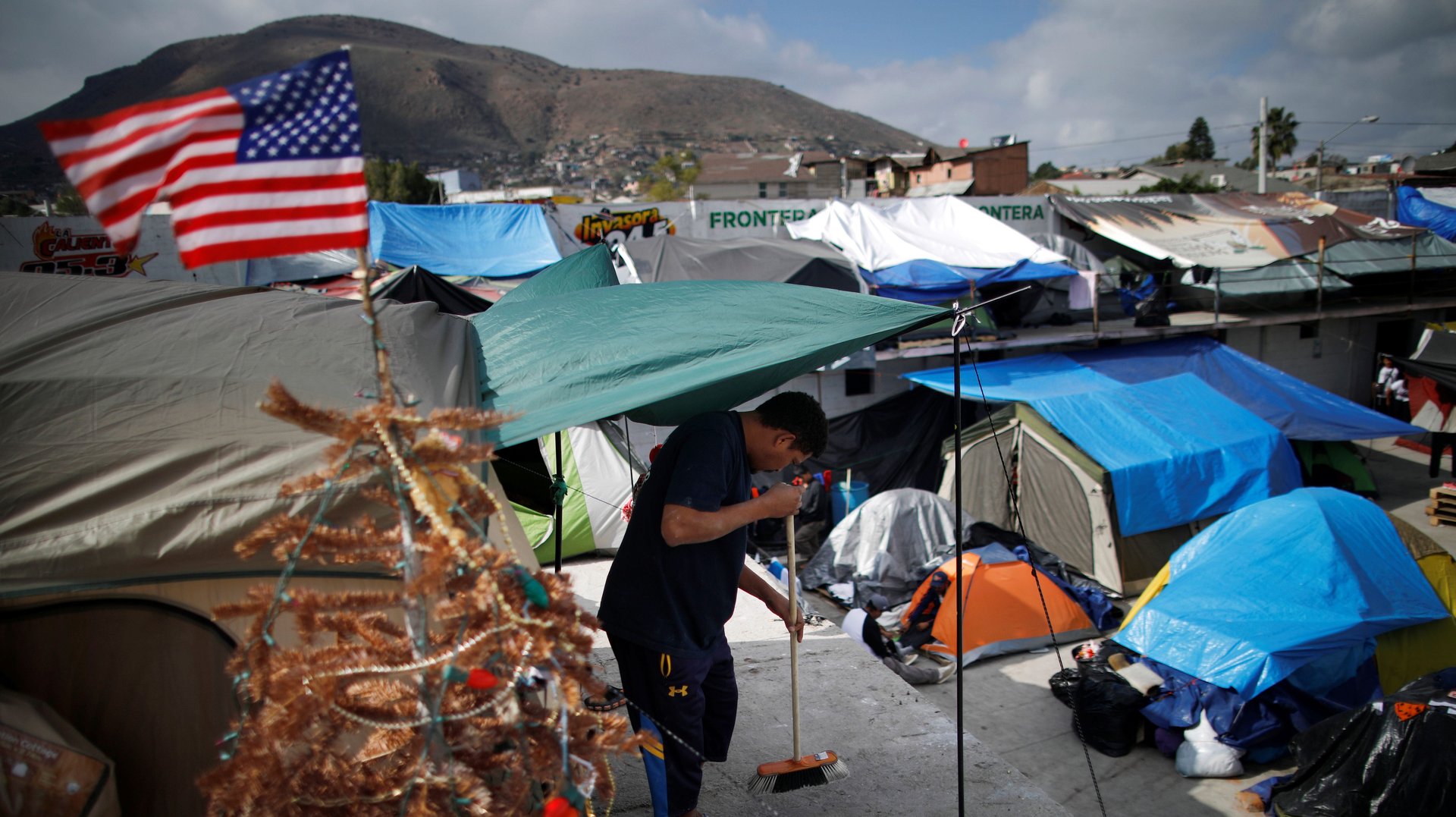Trump’s decision to send asylum seekers back to Mexico weakens his case for a wall
Donald Trump is still determined to shut down the US government if Congress doesn’t approve money for his border wall.


Donald Trump is still determined to shut down the US government if Congress doesn’t approve money for his border wall.
In a series of morning tweets today (Dec. 21), he demanded that Republican senators vote for a spending bill that includes more than $5 billion for building the wall. The US House passed the measure in a 217-185 vote yesterday.
Just a day earlier, his administration rolled out a new policy that undermines Trump’s case for a wall between the US and Mexico. Homeland Security secretary Kirstjen Nielsen said her agency will return asylum seekers to Mexico while their cases are processed, instead of allowing them to stay in the US.
The change will likely reduce the number of immigrants entering the US more dramatically than any wall. Many of the people Trump is trying to block are asylum seekers who are not trying to sneak into the country. Even those who cross illegally immediately turn themselves in to Border Patrol agents.
The DHS move is the Trump administration’s latest attempt to deal with an increase in the number of Central American immigrants fleeing crime and poverty.
Under US and international law, American authorities are required to hear their asylum requests. Officials are also subject to rules that prevent them from detaining children and families, which make up a large proportion of asylum seekers, for long periods of time.
Because the US immigration system is not set up to quickly process their claims, authorities have been releasing immigrants until their cases are resolved, a process Trump denounces as “catch and release.” Under the new policy, dubbed “catch and return,” that wait will now take place in Mexico.
“They will not be able to disappear into the US,” Nielsen told lawmakers. “They will have to wait for approval to come into the US.”
Homeland Security has released few details on the logistics of the new rule, including how long it will be in place. The Mexican government, which described the US decision as unilateral, said it will temporary allow (link in Spanish) returned asylum seekers to stay. Mexico said the arrangement should not be mistaken with a “safe third-country agreement” under which immigrants traveling through Mexico would have to request asylum there.
The new measure puts asylum seekers in a tough spot. There are already thousands of immigrants living in makeshift shelters along the Mexican side of the border waiting for a turn to make their case to US border officials. It’s unclear whether the Trump administration will provide any funds to help house them during what will now no doubt be a much longer wait. It can take years for an asylum case to make its way through the system.
And the immigrants are also staying in some of Mexico’s most dangerous areas, some with higher murder rates than the capitals of the Central American countries they’re trying to escape. Last weekend, two Honduran teenagers who were hoping to request asylum in the US were killed in Tijuana.
For some of the people waiting in Mexico, the new measure is effectively a wall. “It’s not a physical wall, but it’s there,” one of them told the San Diego Union-Tribune. “It’s a sad day for us.”